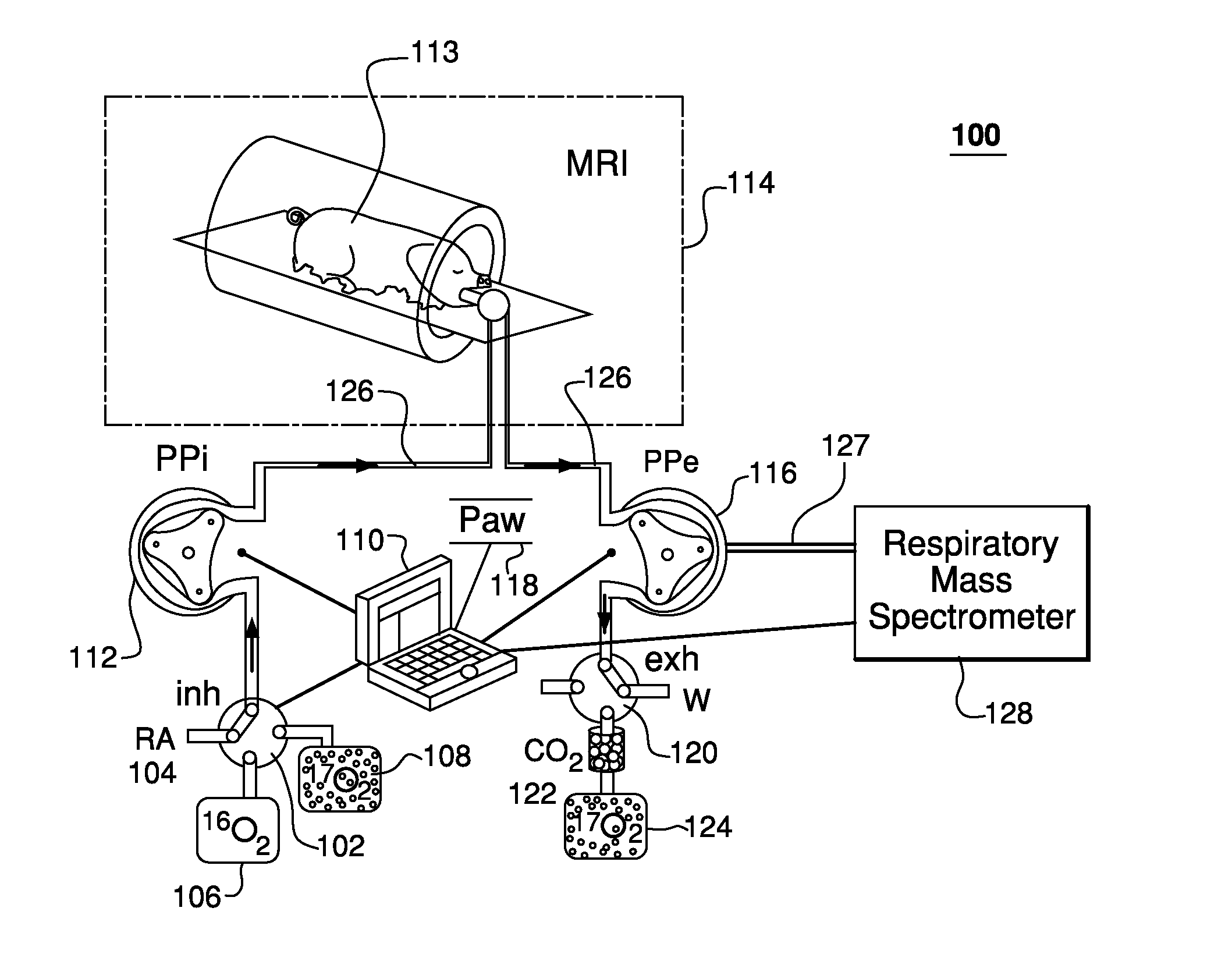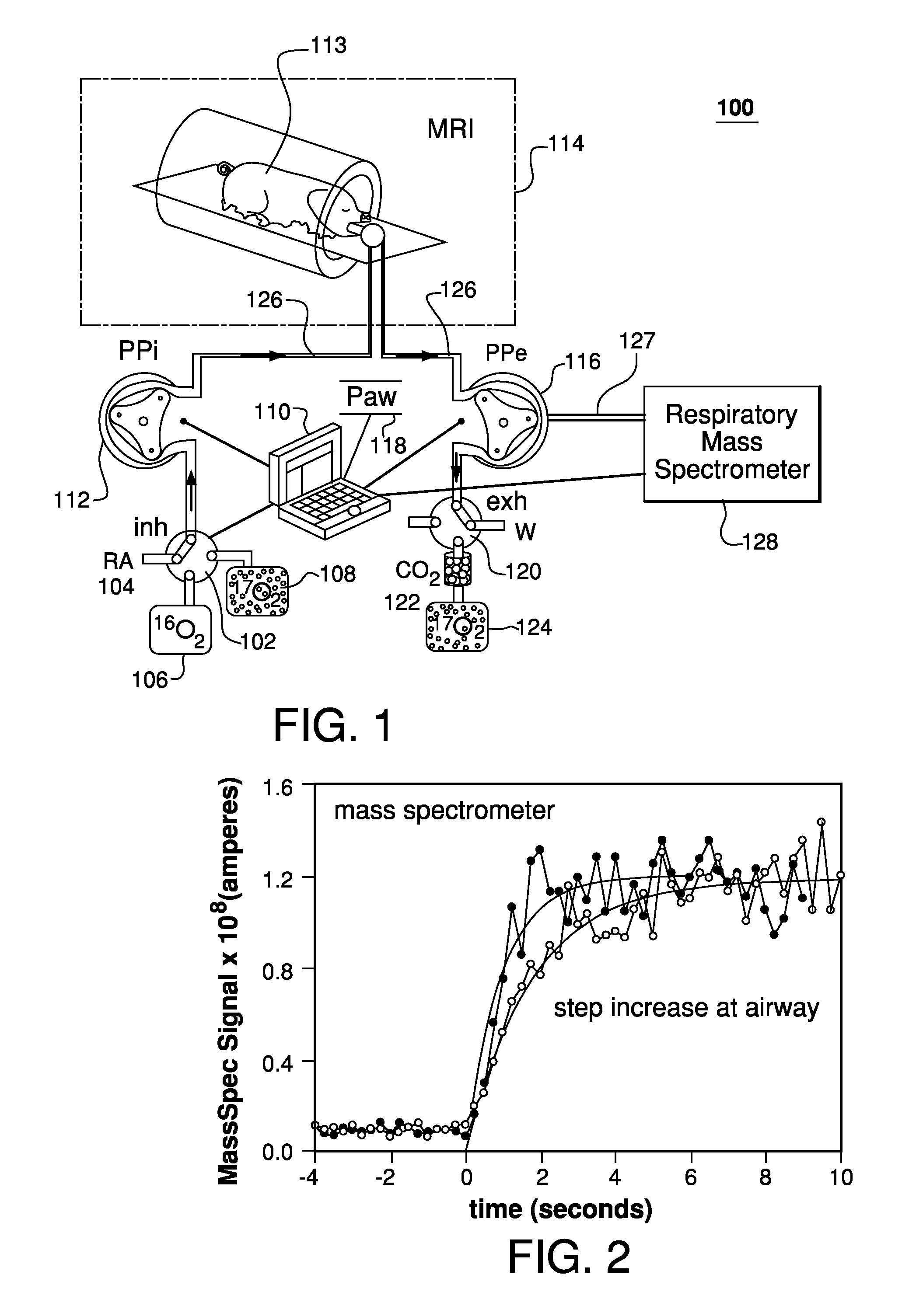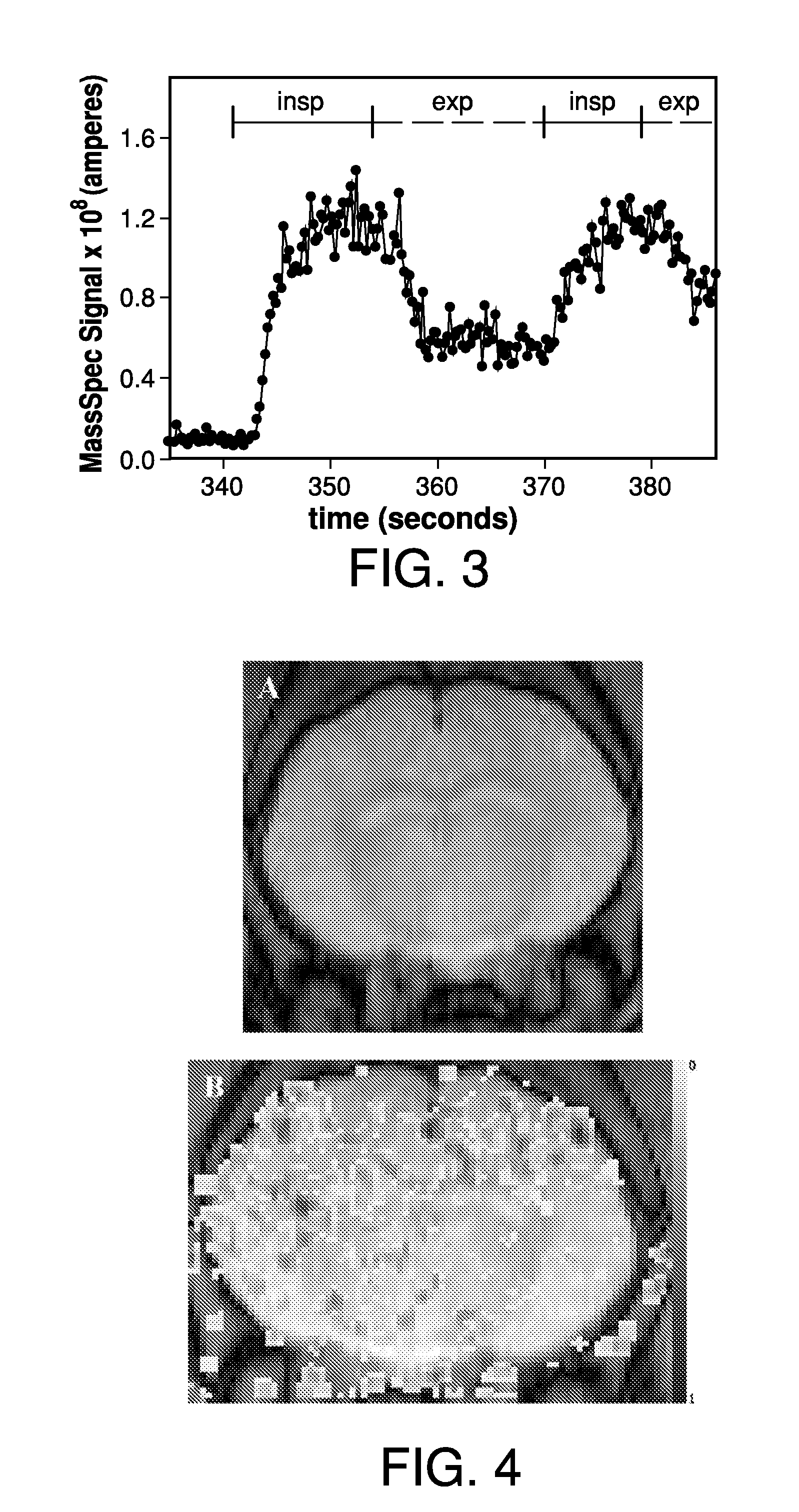Method and apparatus for providing pulses inhalation of 17O2 for magnetic resonance imaging of cerebral metabolism
a magnetic resonance imaging and pulse inhalation technology, applied in the field of magnetic resonance imaging methods and apparatuses, can solve the problem that the ventilation circuit is not usually provided with a way, and achieve the effects of minimizing the diffusive slurring of concentration fronts, minimizing transit times, and simplifying interpretation
- Summary
- Abstract
- Description
- Claims
- Application Information
AI Technical Summary
Benefits of technology
Problems solved by technology
Method used
Image
Examples
example
Single Shot T1ρ Magnetic Resonance Imaging of Metabolically Generated Water In Vivo
[0111]As discussed above, the use of Oxygen-17 MRI provides great promise for the clinically-useful quantification of metabolism. To bring techniques based on 17O closer to clinical application, demonstrated herein is imaging of metabolically generated H217O in pigs after 17O2 delivery with increased temporal resolution T1ρ-weighted imaging and precision delivery of 17O2 gas. The kinetics of the appearance of H217O in pig brains are displayed with one to two minutes of 17O2 delivery, the shortest delivery times reported in the literature. It is also shown that H217O concentrations can be quantified with single shot T1ρ imaging based on a balanced steady state free precession readout, and that with this strategy pausing to reduce T1 saturation increases sensitivity to H217O over acquisition in the steady state. Several additional considerations with this sequence, which can be generalized to any pre-en...
PUM
 Login to View More
Login to View More Abstract
Description
Claims
Application Information
 Login to View More
Login to View More - R&D
- Intellectual Property
- Life Sciences
- Materials
- Tech Scout
- Unparalleled Data Quality
- Higher Quality Content
- 60% Fewer Hallucinations
Browse by: Latest US Patents, China's latest patents, Technical Efficacy Thesaurus, Application Domain, Technology Topic, Popular Technical Reports.
© 2025 PatSnap. All rights reserved.Legal|Privacy policy|Modern Slavery Act Transparency Statement|Sitemap|About US| Contact US: help@patsnap.com



